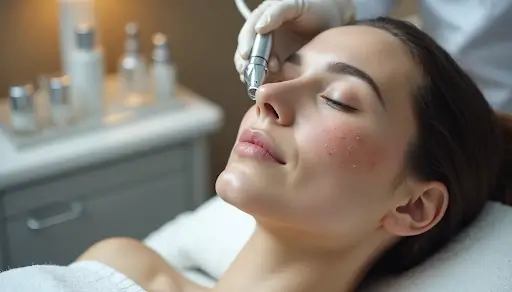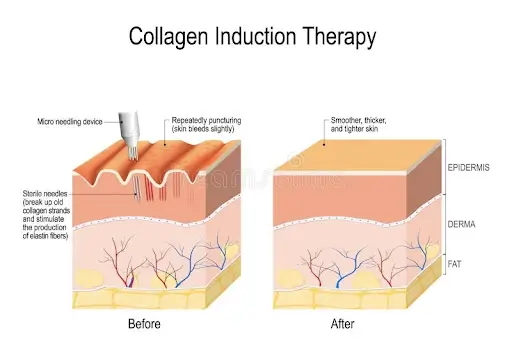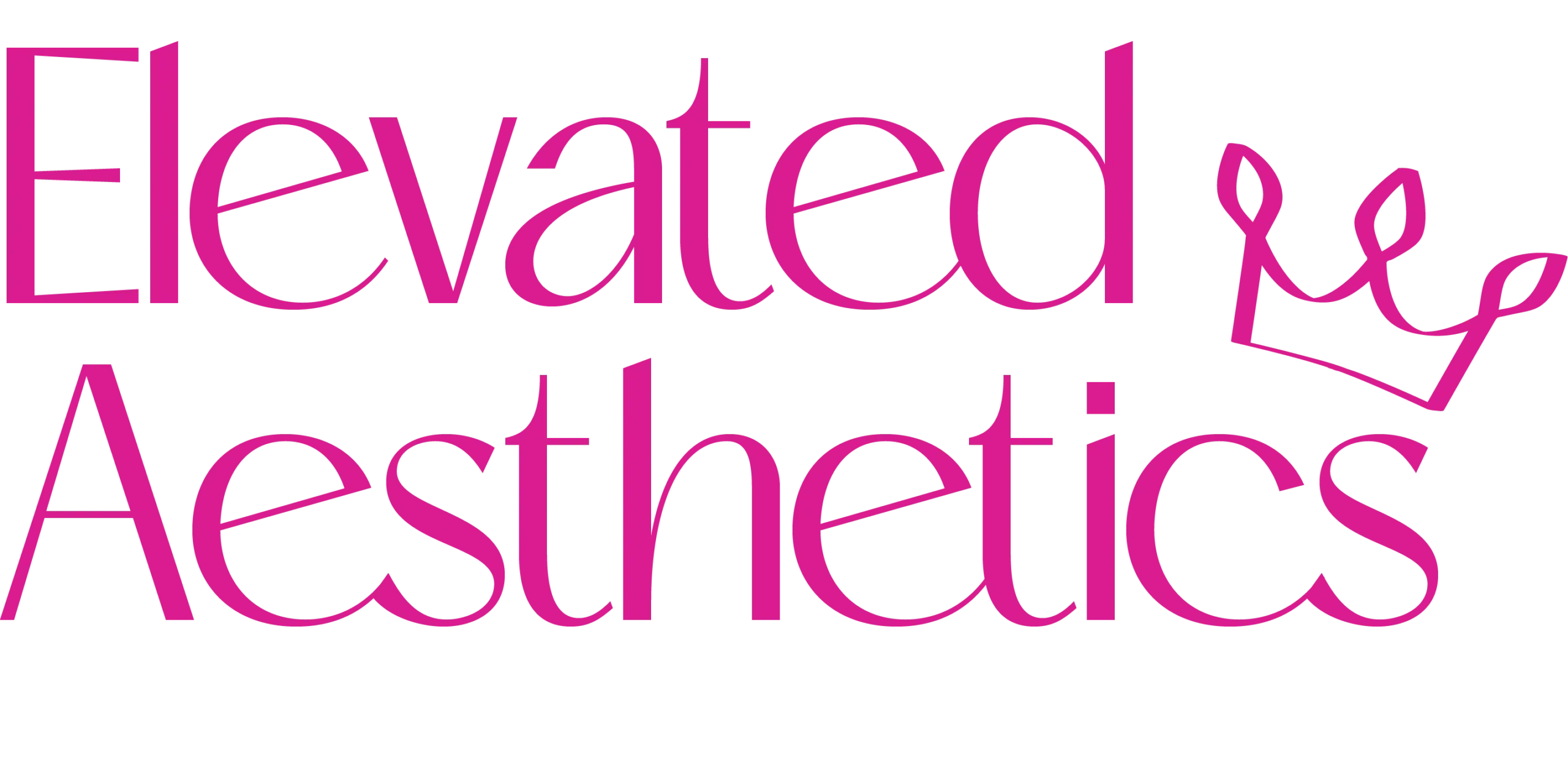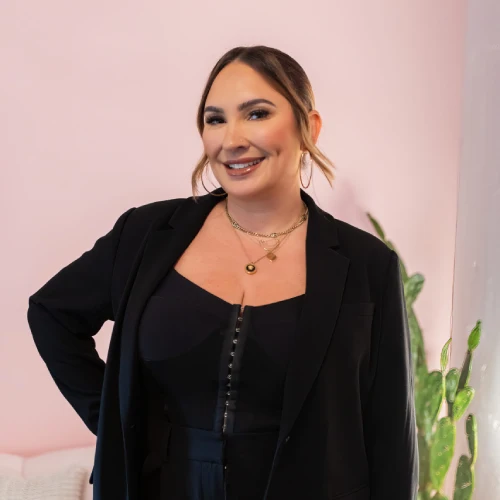Did you know a microneedling facial can boost collagen production by 400% after just four sessions over six months? The name might sound scary, but this gentle procedure has gained popularity because it tackles multiple skin issues. The process uses tiny, sterile needles to produce micro-injuries in your skin. These small pricks park your body's …

Did you know a microneedling facial can boost collagen production by 400% after just four sessions over six months? The name might sound scary, but this gentle procedure has gained popularity because it tackles multiple skin issues. The process uses tiny, sterile needles to produce micro-injuries in your skin. These small pricks park your body’s natural mending capacities. You’ll see advancements in your previously missed or unwanted acne scars, large pores, stretch marks, and fine lines and wrinkles.
You will see improvements in your previously missed or unwanted acne scars, large pores, stretch marks, and fine lines and wrinkles. And any topical skincare products will become three times as effective when used with this treatment because recipients experience absorption rates up to 300%. Each treatment will cost anywhere from $200-800, and many people will see visible changes in their skin after only a week. Let me walk you through the science of microneedling, the actual treatment itself, and how microneedling can help you achieve your skincare goals.
Why do people choose microneedling
Microneedling has become a popular treatment because it works well for many skin problems. This gentle procedure gives you better results than other skin treatments, especially when you have minimal time for recovery.
Common skin concerns it addresses
Microneedling stands out as an excellent treatment for skin conditions of all types. We used it mainly to treat acne scarring. The process creates micro-injuries that encourage your skin to heal itself by producing more collagen. Your body’s natural healing process starts with these tiny injuries, which work great for depressed acne scars like rolling, boxcar, and icepick varieties.
Microneedling helps with several other skin issues:
- Fine lines and wrinkles disappear as collagen and elastin production increases
- Hyperpigmentation and uneven skin tone
- Enlarged pores look smaller because collagen builds around them
- Stretch marks on different body areas
- Hair growth in people with alopecia
Your skin’s texture improves over time as your body’s wound healing response creates new collagen and elastin structures.
Microneedling vs. laser and chemical peels
Microneedling has clear benefits compared to other methods of skin rejuvenation. Laser treatments utilize heat, which can affect skin pigmentation, while microneedling can safely be utilized on all skin colors, types, and conditions. Microneedling is a valuable option for darker skin types, as those patients may develop hyperpigmentation from laser procedures.
Recovery time is very different for chemical peels. Microneedling has a recovery time of about 24 hours, during which time the skin will look as if it had a light sunburn. Microneedling also penetrates deeper than most chemical peels to help improve moderate wrinkles and textured issues.
People often select microneedling as it is less expensive than laser therapies and can yield similar impressive results.
What is a microneedling facial?
The licensed practitioner would administer the microneedling facial by utilizing a device containing tiny needles to create thousands of micro-wounds in the skin. The device creates controlled micro-injuries to the skin that initiate the body’s wound healing cascade, which operates by producing collagen and elastin cells.
The licensed practitioner would utilize a glide agent, e.,g. Hyaluronic acid gel enables the device to move easily across the skin. Some licensed practitioners combine boosted agents such as peptides, growth factors, or vitamins into the microneedling treatment.
How microneedling works beneath the surface

Those tiny pricks you feel during a microneedling facial trigger an amazing biological process that renews your skin. The treatment creates controlled micro-injuries that activate your body’s natural healing mechanisms. This leads to remarkable skin changes beneath the surface.
The science of collagen induction
Microneedling works through a process called collagen induction therapy. The fine needles create thousands of microscopic punctures that trigger healing responses without damaging the epidermis. These controlled micro-injuries make your cells believe an injury has occurred. The cells’ electrical potential changes from -70 mV to about -100 mV. This move triggers growth factors to release, including platelet-derived growth factor, transforming growth factor alpha and beta, and fibroblast growth factor.
Your fibroblasts move to the injury site and start producing new collagen and elastin. Research shows this process can boost collagen and elastin by up to 400% six months after just four monthly sessions. The new collagen forms in a normal lattice pattern instead of parallel bundles like scar tissue. This creates a healthier skin structure.
Phases of skin healing after treatment
The healing experience after microneedling has distinct phases. Your skin’s original response includes redness and mild swelling that usually fades within 48 hours. This phase releases various growth factors needed for healing.
The proliferation phase follows, where new collagen starts forming. You might notice some skin flaking during this time as your skin renews itself. Healthy epithelial cells rise on the face. This promotes brisk healing and gives you a more radiant complexion. The redoing phase happens between weeks 2- 4, when you will see conspicuous changes in skin texture. This time is vital for optimal skin development as your body strengthens and refines the new tissue. The mending continues internally for over two months. Collagen products persist for 5- 7 times in the form of collagen III.
How PRP microneedling facial boosts results
PRP (platelet-rich plasma) makes microneedling even better. This procedure combines your body’s healing platelets with traditional microneedling. The process starts with drawing a small blood sample that goes into a centrifuge to separate and concentrate platelets within the plasma.
These concentrated platelets contain powerful growth factors, proteins, and cytokines that speed up healing and boost collagen production. The PRP penetrates deep into the skin through micro-channels from needling. It activates multipotent stem cells. These stem cells think an injury has occurred and start generating new, younger tissue.
PRP microneedling facials help you heal faster, reduce pigmentation and scarring, and improve your skin’s texture and vibrancy. Traditional microneedling works great, but adding PRP helps you reach your desired results sooner.
What to expect during and after treatment

Want to know what happens in the treatment chair? Let’s walk through the microneedling experience from start to finish. This will help you set realistic expectations and get the best results. Here’s everything you should know about the treatment, sensation, and healing process.
Pain, downtime, and recovery timeline
The discomfort from microneedling is not too bad. Most people say it’s mild to moderate. You will get a topical deadening cream 20- 30 minutes before the treatment starts. This reduces the sensation by a lot. The areas near your eyes and lips might feel more sensitive because the skin is thinner there. Right after your microneedling facial, you will see greenishness that looks like a mild to moderate sunburn. The greenishness generally fades within 24- 48 hours on your face but might last longer on other body parts. Some lump is anticipated in the first 48 hours. Your recovery will follow this pattern: Day 1- 2, your skin will be red, sensitive, and tight. It might feel warm to touch, like a sunburn. Day 3- 5 The skin gets dry and might start peeling as cells turn over briskly. Do not worry- these cells would naturally exfoliate anyway. The treatment just speeds up the process. Day 7: You will notice smoother, more radiant skin as mending continues. Your skin keeps regenerating internally for over two months.
Post-treatment skincare tips
Keep your skin clean with lukewarm water and a gentle, pH- pH-balanced cleaner for the first 48 hours. Use a clean kerchief to stroke your skin dry- no rubbing. Your skin needs redundant hydration after treatment. Use the recommended moisturizers and hyaluronic acid serums to help mend. Drink plenty of water, too. It helps your body make healthier collagen cells. Stay away from these effects for at least 3 days:
- Direct sun exposure and tanning beds
- Swimming in pools, lakes, or oceans
- Makeup (especially with previously used applicators)
- Retinol, vitamin C, and alpha/beta hydroxy acids
- Exfoliating brushes or scrubs
After that, make sure to use broad- diapason SPF 30 sunscreen. Your skin stays sensitive to UV damage for weeks after treatment.
When to avoid microneedling
Microneedling isn’t for everyone. Stay if you have an active skin infection, cold sore, or serious acne with open lesions, as it could introduce bacteria and lead to a more severe infection. Individuals suffering from habitual skin conditions similar to eczema, psoriasis, or rosacea would want to consult precisely. The treatment itself could produce flare-ups- ups and those fitted to keloid scarring may develop raised scars from the controlled injuries. Anticoagulant specifics increase bleeding threat, as does isotretinoin( an acne drug), which should be avoided during and for at least six months after. The treatment is contraindicated if you are pregnant or breastfeeding, are immunocompromised, have had spotlights or chemical peels in the last 3 months, unbridled diabetes, or are diagnosed with skin cancer or precancerous lesions.
Comparing professional and at-home microneedling
With all the at-home microneedling products on the market these days, will they ever be as effective as a professional microneedling treatment? Let’s break down the primary differences we should be concerned about with respect to our skin health and outcomes.
Safety concerns with DIY microneedling
Many individuals do not recognize the real risk of home microneedling. The risk of infection is high because skin injuries from improperly sterilized instruments can introduce bacteria directly into the dermis. It is entirely avoidable if you have a professional treatment that utilizes single-use, sterile cartridges in a clean clinical setting. Bad technique can lead to serious problems. DIY users often end up with permanent indentations, bigger pores, track marks, and even granulomatous reactions. One person shared how microneedling “destroyed my skin” and left “bumps and holes in my face”.
Home devices get dull after multiple uses and create uneven punctures that might cause scarring. Users often make things worse by applying the wrong products after treatment, pushing ingredients too deep into their skin.
When to see a dermatologist
You should talk to a dermatologist before trying microneedling if you have:
- Active skin infections or acne
- Cold sores
- Keloid scarring
- Psoriasis or eczema
- Recent isotretinoin (Accutane) use
A qualified professional brings vital benefits beyond safety. They assess your skin’s condition properly, suggest the right treatment depth, and combine microneedling with other therapies for the best results. Best of all, they make sure treatments go deep enough to fix major issues like scarring or deep wrinkles – something home devices just can’t do.
Conclusion
Microneedling is a proven solution for many skin problems. This piece explores how the treatment works deep inside to kick-start your body’s natural healing process. Your skin produces new collagen and elastin when tiny controlled injuries trigger it into action. This leads to amazing improvements in everything from acne scars to fine lines.
The evidence shows that professional microneedling works better than many other skin treatments. It’s safe for all skin types, unlike laser procedures. It also needs less recovery time than chemical peels while giving excellent results.
DIY devices are everywhere now, but they can’t match what professionals offer. Professional microneedling goes deep into the skin layers where real collagen production happens.
Microneedling stimulates your skin’s natural healing process to reveal a fresher, younger-looking complexion.
Book Your Professional Microneedling Treatment
FAQs
Q1. How soon can I expect to see results from microneedling?
Original advancements in skin texture and tone may be conspicuous within a week. Still, significant results, especially for enterprises like acne scars or deep wrinkles, generally develop over several months as collagen production increases. Most people bear multiple sessions for optimal issues..
Q2. Are there any risks associated with microneedling?
While generally safe, microneedling can cause temporary side effects such as redness, swelling, and mild discomfort. In rare cases, improper technique or inadequate sterilization may lead to infection or scarring. It’s crucial to have the procedure performed by a qualified professional to minimize risks.
Q3. What should I expect in the days following a microneedling treatment?
For the first 48 hours after treatment, your skin may appear red and feel sensitive, similar to a sunburn. You might experience some tightness and mild swelling. By day 3-5, you may notice some flaking as your skin begins to renew itself. It’s important to follow post-treatment care instructions carefully during this time.
Q4. How does microneedling compare to other skin rejuvenation treatments?
Unlike some laser procedures, it’s safe for all skin types and carries a lower threat of hyperpigmentation. It also requires a lower time-out than chemical peels while still delivering emotional results for colorful skin enterprises, including fine lines, scars, and uneven texture.
Q5. Can I perform microneedling at home?
While at-home microneedling biases are available, they’re significantly less effective and potentially more perilous than professional treatments. Home biases do not access deeply enough to stimulate meaningful collagen products and may increase the threat of infection or skin damage if not used properly. For safe and effective results, it’s stylish to consult a dermatologist or a good skincare professional.



